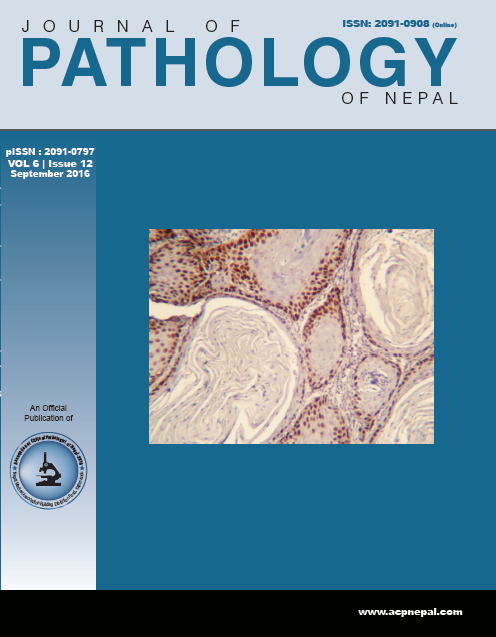Histopathological spectrum of Psoriasiform dermatitis
DOI:
https://doi.org/10.3126/jpn.v6i12.16265Keywords:
Psoriasiform, Dermatitis, Inflammatory, HistopathologicalAbstract
Background: Psoriasiform dermatitis is a frequently encountered terminology in a wide variety of inflammatory dermatoses. It often poses challenges to both dermatologists and pathologists alike. Clinical features when considered alone may not be reliable, as they vary with both disease duration and treatment. On the contrary, histopathological material constitutes definite hard evidence, which can be preserved and will continue to be available for future review. The objective of the study is to study the histopathological findings in Psoriasiform dermatitis.
Materials and Methods: This is a retrospective study in a tertiary care centre in Kerala, South India. All cases diagnosed as Psoriasis or mentioned as one of the differential diagnosis were included. The material included 66 skin biopsies. Patients with a previous diagnosis of the same were excluded from the study.
Results: The lesions comprised 9% of the total number of skin biopsies. The age distribution pattern revealed that the highest percentage was in the 41-60 year age group (50%) with a male preponderance of 65%. Psoriasis was the most common lesion (60.60%) and Lichen simplex chronicus was the second most common lesion (10.60 %), encountered in the study.
Conclusion: Some of the histopathological features are specific and characteristic for each entity like Psoriasis, Pityriasis rubra pilaris, Pityriasis rosea and Inflammatory linear verrucous epidermal nevus whereas some overlap in lesions like Prurigo nodularis, Lichen simplex chronicus and Allergic contact dermatitis. Hence, combination of proper clinical observation and histopathological study will give a conclusive diagnosis.
Downloads
Downloads
Published
How to Cite
Issue
Section
License
This license enables reusers to distribute, remix, adapt, and build upon the material in any medium or format, so long as attribution is given to the creator. The license allows for commercial use.




